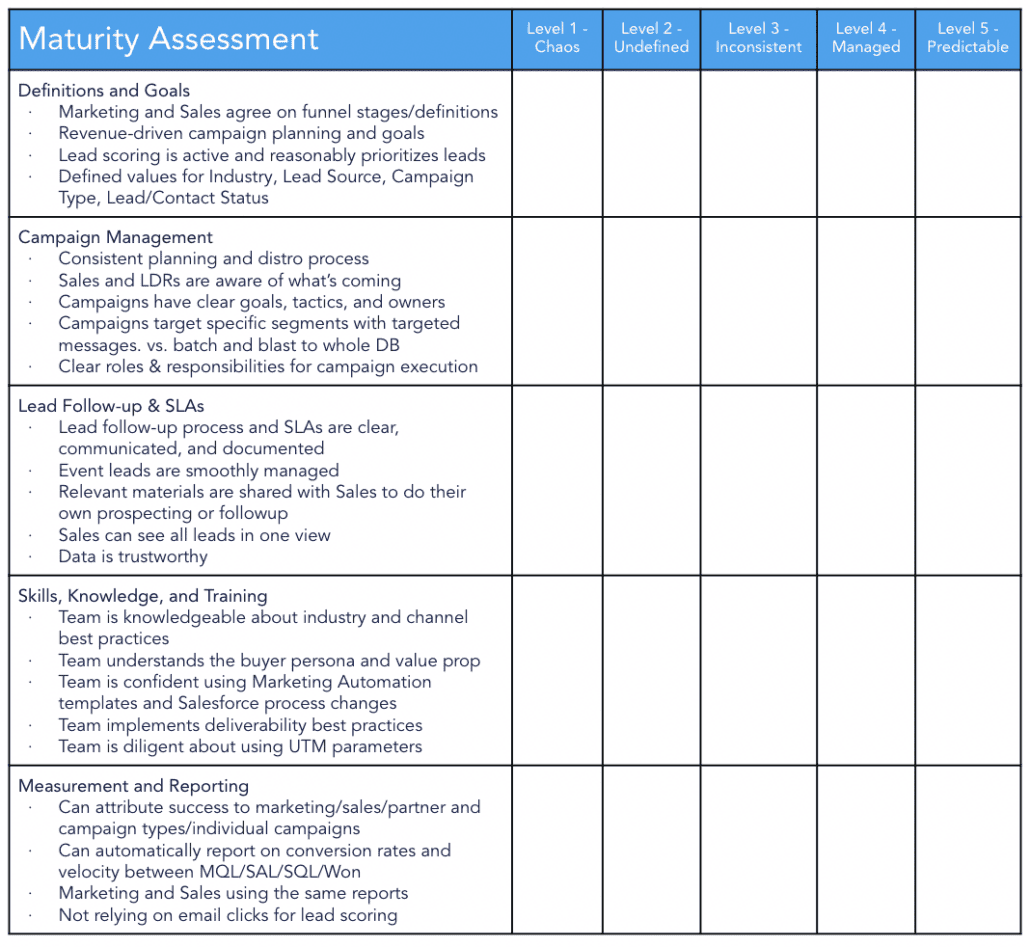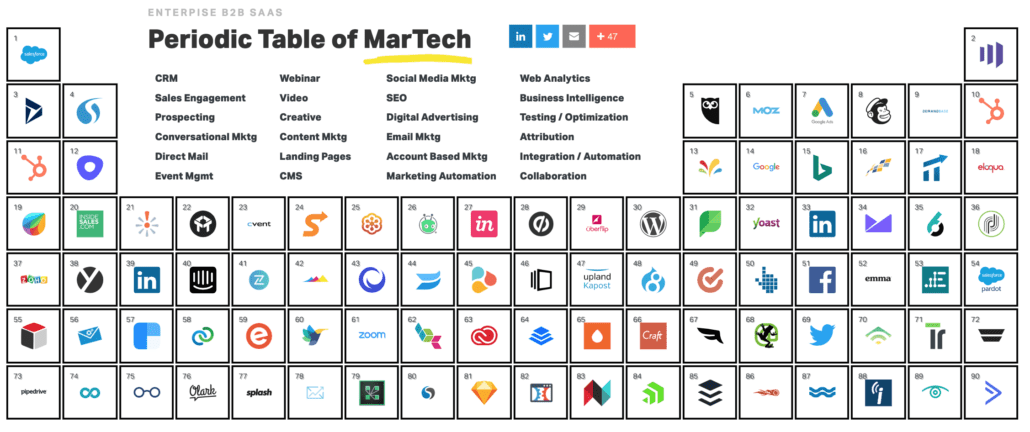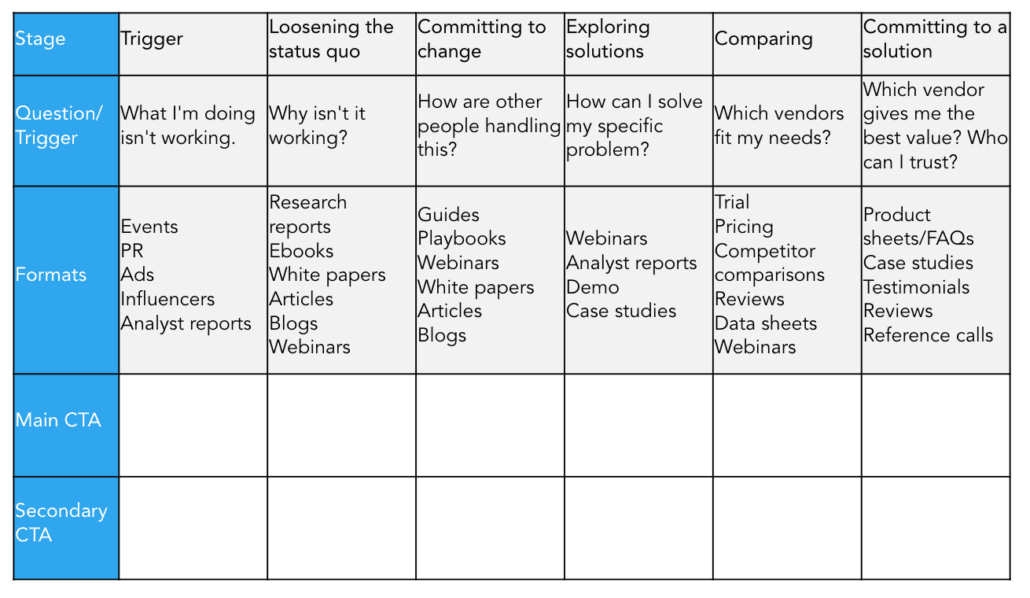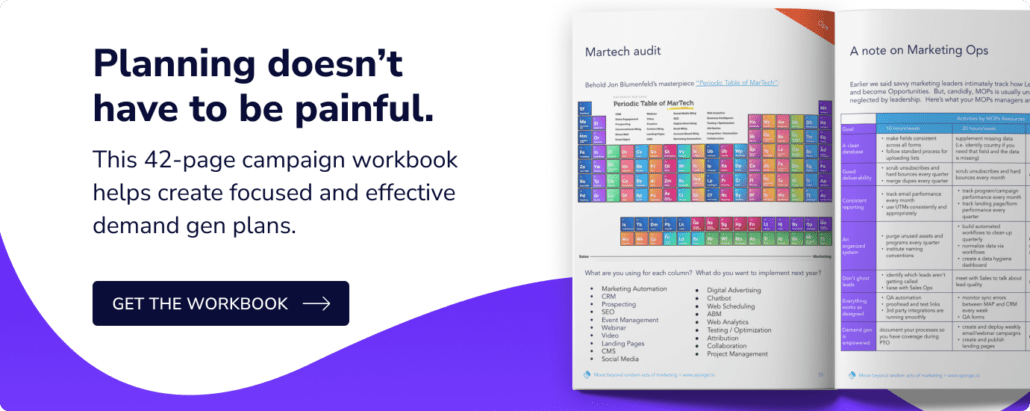Amid pervasive layoffs and budget cuts, most teams are retooling their 2H marketing plan – slimming down costs, adapting to smaller teams, or triaging projects around revenue-gen. If you have campaigns, channels, or projects with abysmal conversion rates, it’s time to free up budget and try something new. You have nothing to lose.
>> Related: How to Assess Your Marketing Maturity (and Then Evolve It) <<
In this post:
1. Map the Marketing team’s holistic maturity
We love to start with 5 minutes of honest introspection. Map your team’s overall strengths and weaknesses. No team is perfect, but there should be complementary skills and harmonious maturity.

2. Audit the MarTech stack for redundancies or gaps
Tools can be budget busters. Ensure you don’t have redundant software (like RingLead and LeanData). And be honest about what tools are luxuries… are Drift, 6Sense, and Sendoso actually getting ROI? There’s no time left for enablement to make a tool successful.
3. Audit your channels and their results
Now map what channels you’re using, what you spent, and how they perform. You’ll quickly see where you have no coverage or appalling waste. Sample channels include:
- Acquisition:
- SEO/blogging
- Paid ads
- Telemarketing
- 3rd party webinars
- Podcasts
- Trade shows
- Conversion:
- Outbound BDRs
- Webinars
- Handraisers (pre-recorded demo, free trial, pricing request)
- Email nurture
- Retargeting
- Nurture:
- Inbound BDRs
- Webinars
- Email nurture
- Engagement:
- Webinars
- Newsletters
- Reference program
- 3rd party review program
Generally, any channel is a red flag if it’s costing $200+/lead or $2000+/opportunity.
4. Scrutinize remaining budget allocations
Slimming down budget mid-year is often an exercise in sunk cost fallacies. The easiest way to budget is to ask, “what percentage of my budget should be spent on…”?
- Brand building/PR
- Tech and tools (including their services)
- Demand gen
- Headcount
- Equipment
- Travel and expenses
Usually headcount, tech/tools, and demand gen should be 90% of the budget. (Sincere apologies to trade shows and PR!)
5. Repackage content
Instead of kicking off new marquee content at this stage, commit to repackaging a couple core assets into the formats best suited to your key persona and your most performant channels.
6. Re-map internal roles and responsibilities
By 2H, headcount has likely changed, and you have a track record of certain projects succeeding or flailing. Host an optimistic and open brainstorm across MOPs, SOPs, Demand Gen, and Product Marketing. Ask everyone to contribute ideas, untangle projects that soured, and remap stakeholders.
7. Assess agencies and freelancers
Specialized skills are expensive and, frankly, hard to manage. Who are you using for each service? What do they cost? Are they managed well? What brave conversations do you need to have?
If your network is dry, these are the marketing freelancers and agencies I recommend without reservation.
8. Retain your best talent
It be can devastating to endure layoffs, frozen budgets, and shelved projects. Change is emotional! Here are 15 cheap ways to build team morale, especially among remote employees.
And, since the US unemployment rate is 3.4%, take stock of who you’d hate to replace. Offer them [more] flexible working hours, extra PTO, and spot bonuses. Money talks.
9. Finally, build scrappy 2H demand gen campaigns
Now it’s time to map your channels, personas, and content into a one-page campaign plan. Circulate with the team and hammer out the details until the campaign is specific, realistic, and will actually reach your most important persona with your most important message. Here’s our template >
If you’re daunted by the scope of this, we can help! We now offer quickstart demand gen audits; just get in touch!










